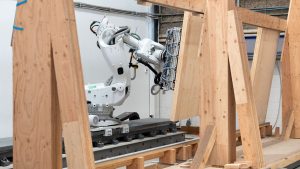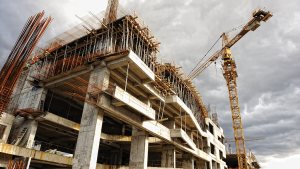Windows have traditionally represented up to 80 per cent of a building’s exterior cladding system. However, building codes across the country are evolving towards ever-higher levels of energy-efficiency performance. In order to meet their overall energy efficiency objectives, ratios on many buildings have already dropped to as low as 35 per cent in some locations.
This should provide motivation to improve the level of performance of Canadian-made window products. “It’s a certainty that by 2032, the standard window in Canada will be triple-glazed with a high-performance frame,” says Al Jaugelis, Technical Director of Fenestration Canada, the association representing Canadian window and door manufacturers. “That will mean either a vinyl or fiberglass frame, or a frame that is aluminum with very substantial thermal breaks.”
Yet, Canadian manufacturers have told the Daily Commercial News that’s it’s more complicated than it appears.
Laura Weil, vice-president of Sales at Euro Vinyl Windows and Doors Inc. in Vaughan, Ont., says the majority of her company’s current line of windows is double-glazed. The company’s triple-glazed products are not currently Passive House certified, however.
“It’s difficult on many levels to migrate into Passive House. However, if we had one major project offered to us, I would start looking to invest.” Weil looks with envy at B.C. government incentives that have encouraged West Coast manufacturers to make the necessary adjustments. That neatly summarizes the current problem in Central and Eastern Canada — low demand from the marketplace coupled with an absence of government incentives.
Fenestration Canada President Terry Adamson acknowledges that B.C.’s support for its manufacturers has been helpful. “My opinion is that this sort of funding is significantly more effective than window replacement rebates that come and go. Assisting manufacturers to develop better products results in better products in the marketplace and raises the entire industry up, helping everyone.”
Adamson’s company, Westeck Windows and Doors based in Chilliwack, B.C., received $80,000 in provincial grants that helped subsidise the 18 months and hundreds of thousands of dollars Adamson estimates were required to launch Westeck’s line of Passive House windows. Demand for high performance windows in B.C. has been boosted by other provincial incentives — notably the B.C. Step Code.
Future versions of the National Building Code (NBC) are expected to be mimicked by the provinces, providing a regulatory push that will increase product demand from larger, mid-level projects and make a persuasive business case for more manufacturers to invest. In the meantime, Adamson agrees with Weil. “Unless it is a high-end multi-unit or commercial build, most contractors and designers are not interested in Passive House-certified windows.”
Although Passive House windows have not been specifically identified as an NBC goal, Adamson admits many of Fenestration Canada members are unhappy with the direction the new building codes are taking. “There are lots of fabricators struggling with this and who do not want more regulations,” he says. “Passive House is not a friendly word to a lot of these people. It’s a challenge — more cost and more difficulties.”
In advance of any code changes, however, municipalities such as Toronto are already speaking publicly about plans to launch deep energy retrofits for many of their publicly-owned buildings. More Eastern Canadian window manufacturers will need to commit and invest if they are to meet the expected increased domestic requirement for energy-efficient products.
That’s something Quebec-based NZP Fenestration has been proactively doing since 2014 by manufacturing Passive House-certified windows under license from a German supplier.
Director of Business Development and Marketing, Laurence Hamel Dorais, explains that NZP combines triple-glazing from Montreal suppliers with the insulated, lead-free, vinyl extrusions and operational hardware required for Passive House framing delivered by container from Europe. The result is competitive pricing and shorter delivery times than complete window units shipped from overseas.
Hamel Dorais believes NZP is well-positioned in the marketplace for future energy efficiency requirements. “We are working on a few larger, multi-storey buildings at the moment and we are ready for the increase of demand.”
John Bleasby is a Coldwater, Ont. based freelance writer. Send comments and Inside Innovation column ideas to editor@dailycommercialnews.com.







As the country marches forward with the energy requirements the performance and water resistance (NAFS) requirements are seldom mentioned, not enforced.